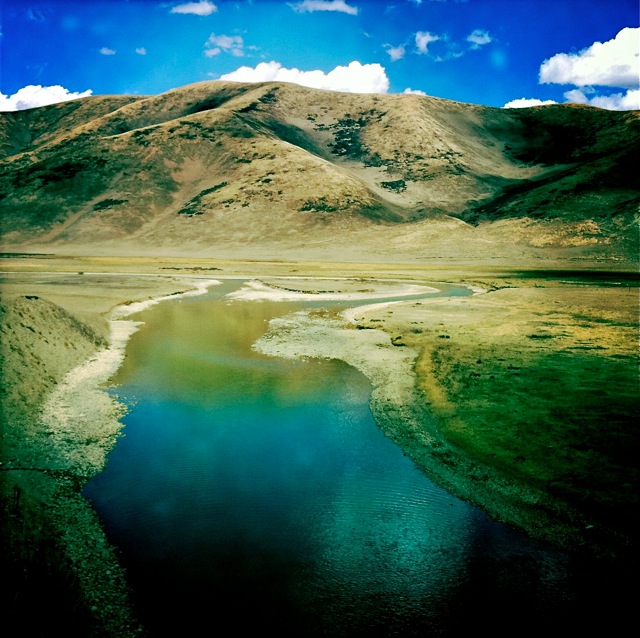The following is an excerpt from Jeff Fuchs’ Tea and Mountain Journals, a blog by explorer, photographer and writer Jeff Fuchs. Jeff is the 2011 recipient of AsiaTravel’s Explorer Grant. He and friend Michael Kleinwort are currently traveling through unknown portions of the Tsalam route in Qinghai.
Below is an update from their journey…

The Nyi Chu river provided a valley ‘trail’ by which salt caravans, single yak, and nomads accessed the salt sources of Qinghai
But then, unexpectedly for reasons that don’t matter but do confuse, we are offered information by locals that yes, salt came through this valley, but never in large amounts and certainly not in caravans, but rather, in groups of two’s and three’s. Yes, salt came in but not from the south as I had imagined, but rather from further west. Families, or simply family members would depart and be back within a week or ten days with a yak or two laden with salt from Sichuan, or this new western locale that is emphasized.
“So should we head to Sichuan’s salt sources”? We ask.
“Mado”, this name comes out at us from nowhere.
“Mado is where you must go to explore the real salt history. It is there that the best salt on the plateau exited”. There are salt and brine wells and salt lakes throughout the Himalayas and upon the Tibetan Plateau, but these are largely mere blips, or well-documented sources. It is the existence of the sources in the nomadic areas that beckon me on – the less documented and ‘hidden’ from view salt centres that we are hunting…and of course those few bodies and minds that still carry their own remnants of tales from the ancient days of trade.
Honkor – Mado
Some would call these wastelands, vast spaces of emptiness that can host only the most rugged life forms…from my heavy eyes; I see that this is as a place of great and silent power that cannot be bent by human hands. These bleak and stunning landscapes measure risk and beauty differently and the ‘reward’ for mistakes or failure here is harsh and often fatal.

Vast and empty – valleys at 4,000 metres near Mado
We are heading west to Mado and the famed salt lake awaits us (we think). Mado County rests at 4,300 metres and it is known for being one of the coldest counties of all of the Tibetan regions. It is called Marduk to the Tibetans meaning, “high place” and it is that, though the ‘town’ itself was more of a nomadic seasonal dwelling place wedged into a long lake shaped valley.
